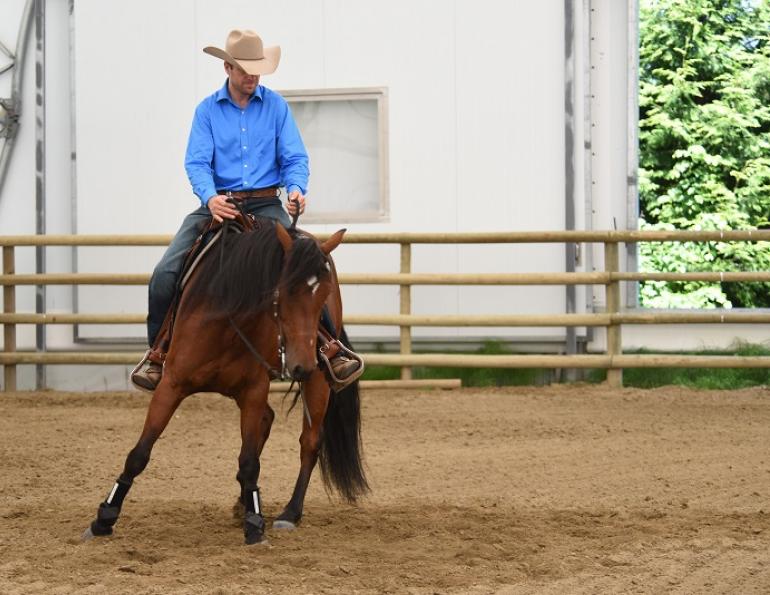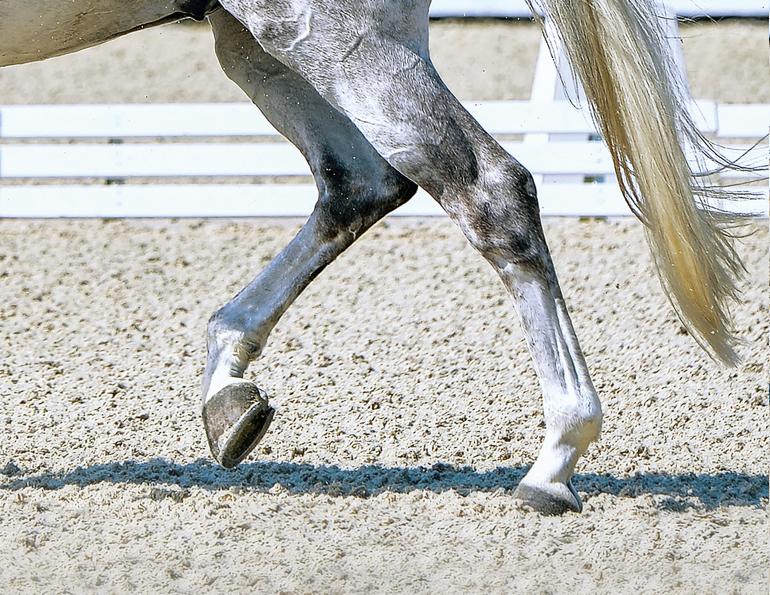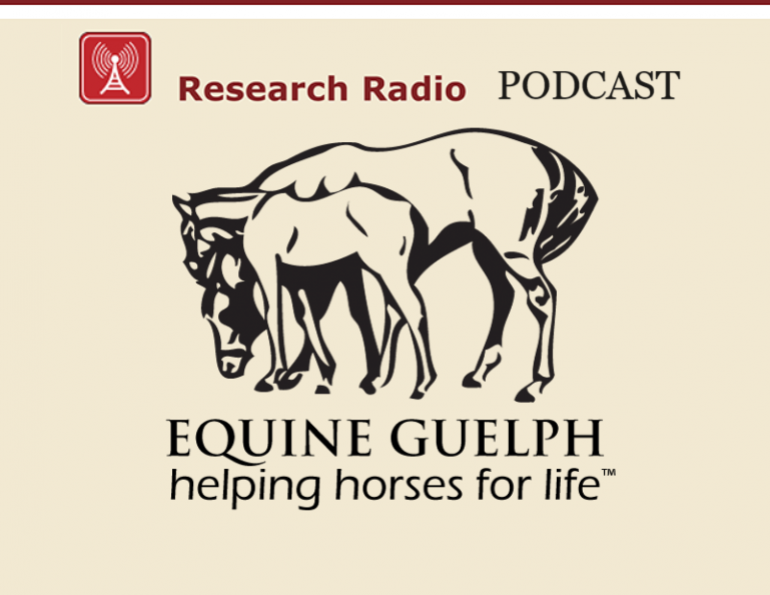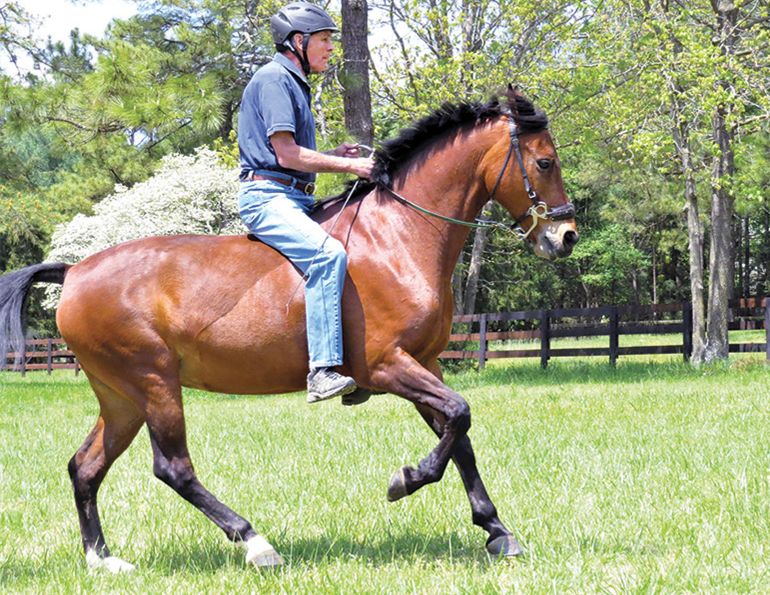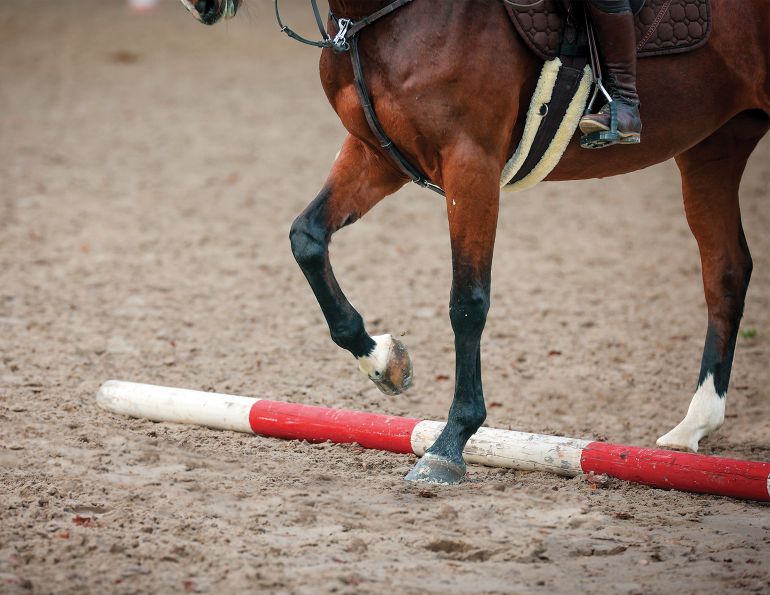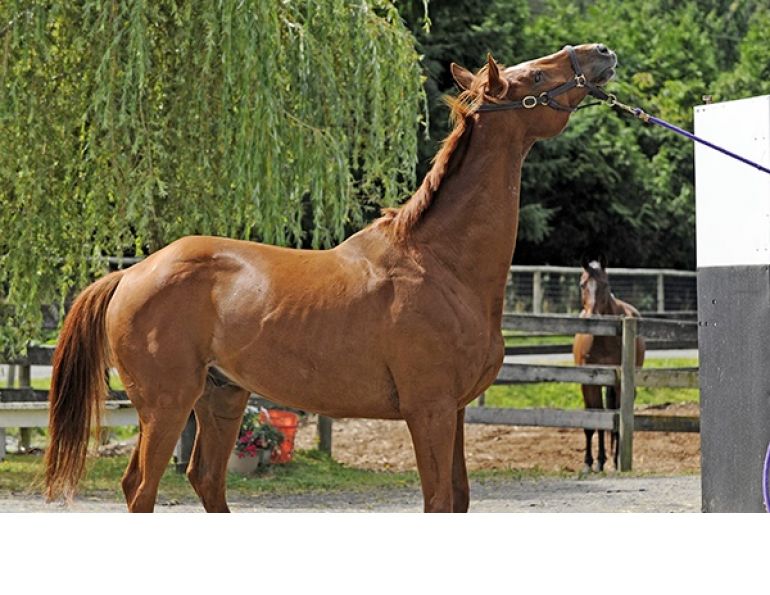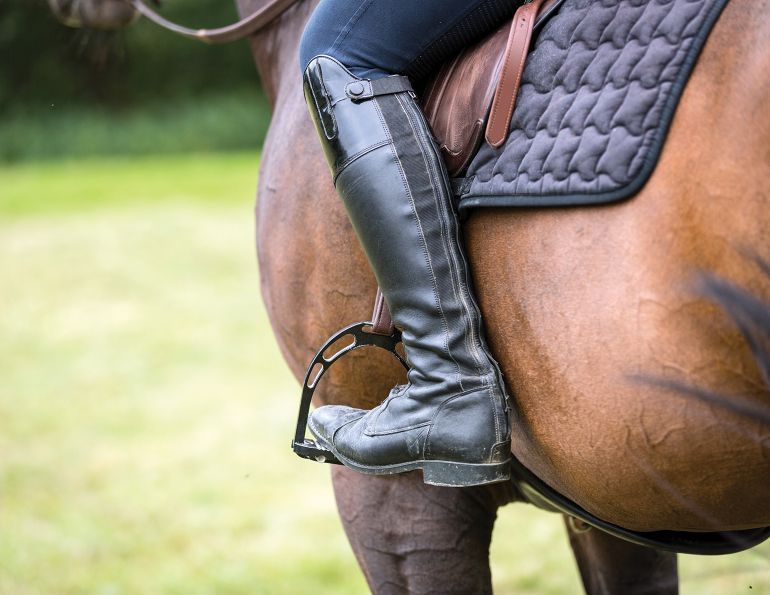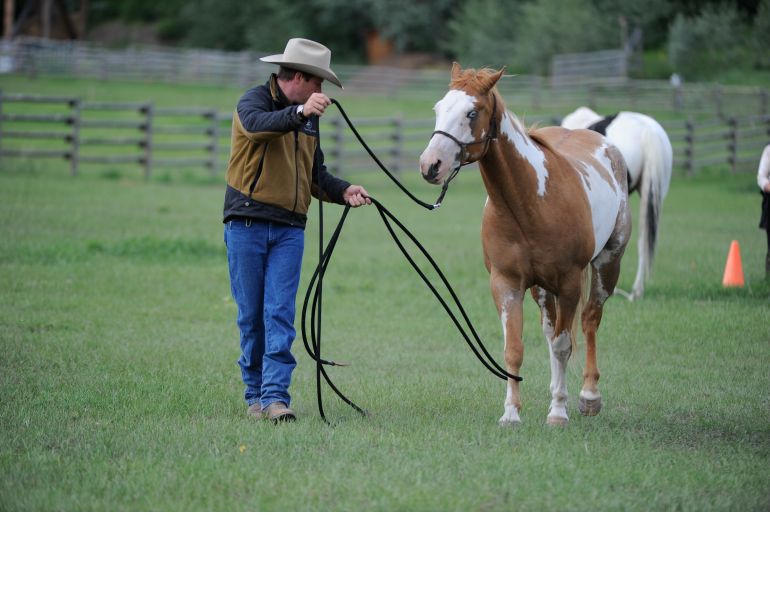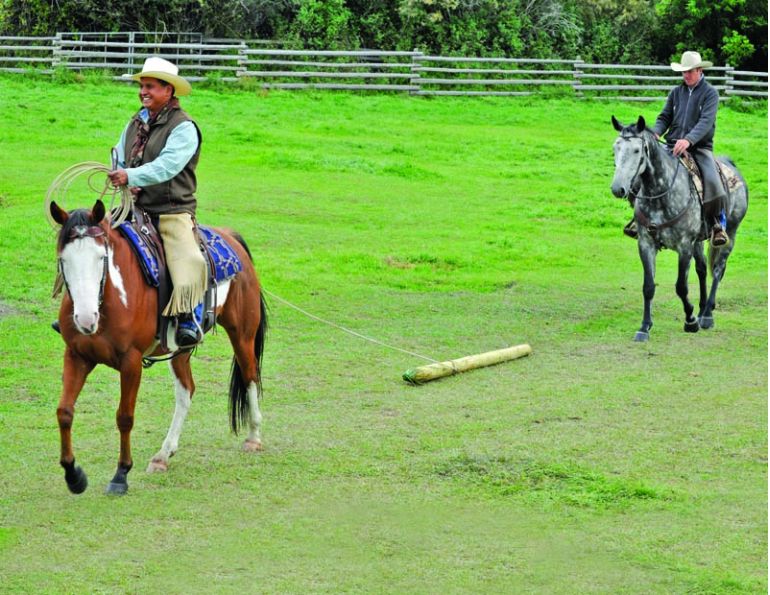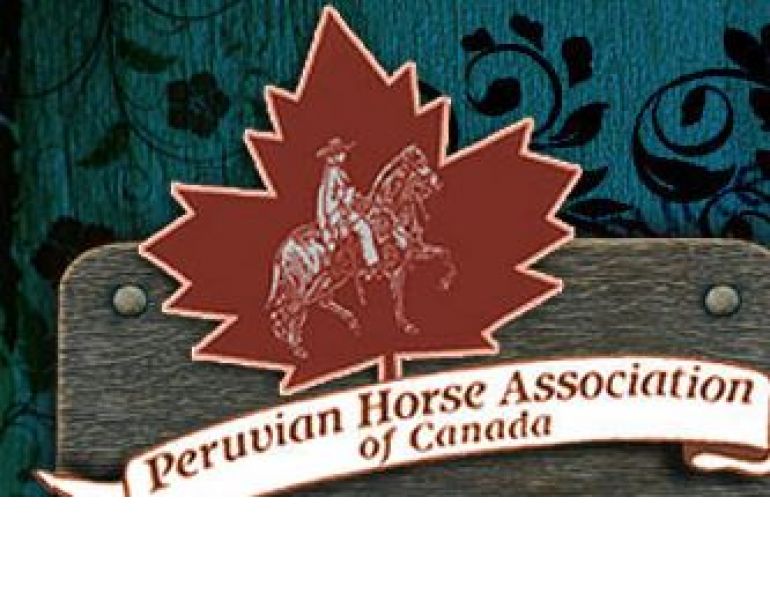Footwork to free up the shoulders
By Jonathan Field
During the past few months I’ve been teaching and developing my young horses and my program. Each year I take time to gain new skills and insights, mainly because I’m an avid student and always benefit as a clinician if I take time to become a student myself. I believe that leaders and mentors of others must never lose sight of what it feels like to be a student.
A student’s role is a humbling and sensitive time for many people, and as a result most adults tend to shy away from the experience. It only takes a few incidents with an overbearing, criticizing instructor, perhaps over a microphone in the presence of an audience, to turn a student away from horses and the potentially wonderful learning experience they could have had. When this happens, the instructor has lost sight of what it is to be a student.
As a teacher, I must remain a student first. This aspiration has led me on all kinds of adventures including several trips to Wellington, Florida, to ride jumping horses, take dressage lessons, learn horseback archery, polo, and participate in many non-horse related activities. Anything that takes me out of my comfort zone is where I’ll go to experience another part of life I may not know about. Sometimes these non-equine activities have given me insights with horses I would have never had. Mostly, they have reminded me of what it is like to be in the vulnerable, humbling, and exciting role of student.
This past year I set out on what was possibly my biggest challenge ever. I ventured into the world of boxing in a legitimate boxing club that develops aspiring young boxers… not 38-year-old horsemen just learning about the sport! One of my closest friends was in the club and assured them that I’m not a whiner or a quitter, so they let me try a session to see if I could cut it and train with the other members – the real boxers. I survived that first time and was allowed to continue.
As I ventured into this new world, there were times when I felt completely uncoordinated, inept, and totally out of place… and wondered what the heck I was doing there. As I persisted, each week things got better and I began to learn more about the subtle techniques of boxing. It was fascinating to discover how some of these lessons of balance, timing, rhythm, and repetition paralleled my lessons with the young horses I was riding.
I specifically recall a time in the middle of my student trials when I was dropping my right hand whenever I threw a jab. On these occasions my coach pointed it out and told me to hold my right hand up. I was desperately trying to do that and I recognized the problem, but could not make my right hand stay up. I kept telling myself: Hold your hand UP… but I couldn’t make it happen! It took about a week of slowly repeating the move for me to correct this habit.
Figure 1

Spins with Little – Turning left, Little’s front right hoof passes in front of his left, while his hindquarters stay in an area the size of a hula-hoop. Photo: Angie Field
As much as I wanted to do what the coach said, I had so many other things to focus on… I was at my maximum mental load. I was very glad to have a patient coach who just kept reminding me and giving me suggestions about how to develop this new habit.
Figure 2

Jonathan working with his boxing coach, Cal Bennett. “Spending the winter in a boxing club was a really good reminder of what it’s like to be a student.” Photo: Angie Field
This experience reminded me of students I’ve had, how hard they try to “get it,” and how it feels to be in their position. It also made me think of Little, the young horse I was developing. Little was having challenges with the footwork in his spins. He was really having a hard time putting it all together to hold his hindquarters fairly still while taking his front feet quickly around. He was just getting tangled up, and lacked the balance and coordination to do the spins well. I remember taking many breaks with him during our sessions, leaning down, giving him a rub and saying, “I can relate buddy! Let’s take a rest and a fresh start.”
Figure 3

The speed bag is all about focus, rhythm, and timing. “Many frustrating times with the speed bag gave me a lot of empathy for how my horses and students feel when they are being challenged by a new learning curve. Becoming mentally quiet, patient, and focused is the key to success in many endeavours.” Photo: Angie Field
In this article I will give you some footwork exercises you can do with your horse, which I took from my lessons as a student in the boxing gym. In terms of your horse, remember what it takes to be a student when you teach these exercises.
All maneuvers require our horses to become more coordinated with their footwork, especially the front feet, which helps free up the shoulders for all the things we’ll ask of them when we advance their training. Supple shoulders allow us to access the horse’s hindquarters so we can set lead departures, balance, and do flying lead changes.
Helping our horses develop better coordination with their front feet is important because there is naturally more weight on the front feet as the head and neck are leveraged over them. It is imperative that riders in all disciplines spend time to develop free-moving forequarters.
I want to share with you a freeing-the-shoulder exercise I use with all my horses.
Figure 4

My new horse “Little” is little but he doesn’t know it! He is a rising four-year-old Peppy San Badger (AQHA) crossed with a quarter Thoroughbred. I rode him ten times as a two-year-old, forty times as a three-year-old, and now as a four-year-old he is heading into his riding career. As a five and six-year-old, the physical work will really increase. This is roughly the same schedule we use with our ranch horses. Photo (Main Photo): Angie Field
Figure 5

Begin by teaching your horse from the ground to move his shoulders over and cross his front legs easily and willingly. Your goal is to adjust the balance of your horse so he steps the hoof closest to you over the front of the other. The key is to remain aware that the hindquarters stay fairly still. In the early stages don’t worry about a hind foot pivoting, but rather that the both hind feet stay inside an area the size of a hula-hoop.
With one hand on his cheek and one on his shoulder or where the front cinch would go, use a steady pressure to teach him to move away. Increase the pressure if he resists and release as soon as he steps over. At first a step or two is just fine, then work your way up to a few full revolutions. The hard part is to maintain a dual focus – the front feet must step one over the other correctly while the hindquarters don’t pop out of the hula-hoop. By beginning on the ground, your horse can learn this without dealing with the issues of a rider. Photo: Angie Field
Figure 6

After your horse has a solid understanding on the ground, begin to ask him under saddle. Here are five keys to remember:
1 - Have the horse walking out with energy before you go into anything technical like this. You don’t want the horse dragging his feet around the arena like he is on his way to a funeral. Start by walking him into the movement and tighten the turn all the way down to where the hindquarters become nearly still and the forequarters move around.
2 – Make sure to open the side you want him to move into with an open direct rein position. That means your leg opens too.
3 - Don’t lean into the turn like you are on a motorbike; rather, sit slightly on the outside seat bone so you free a space for your horse to move into. Notice I am slightly off the left side with the rein and leg open and the outside (right side) leg is pressing.
4 – Ask only a quarter turn when you begin. Your horse won’t likely have the balance and coordination to hold the hindquarters inside the hula-hoop for more than that. Ask more when the quarter turn gets really easy for him.
5 – Video feedback is useful. It can be hard to feel what is happening with your horse’s feet. Having someone take a quick video with their smart phone is a great way to get instant feedback to help you progress by seeing what you are doing well and what you can improve on.
Photo: Angie Field
Play with this and build it up to one full revolution with ease and balance both ways. Then in Lessons from the Boxing Ring, Part 2 (Spins with Little: The Flower Petal Exercise), I will teach you the next stage and an exercise called the Flower Peddle Pattern.
Life is a journey full of lessons. Sometimes you never know where the next important piece will come from. Keep your eyes, ears, and mind open for opportunities, and Stay Inspired by Horses™.
To read more articles by Jonathan Field on this site, click here.



